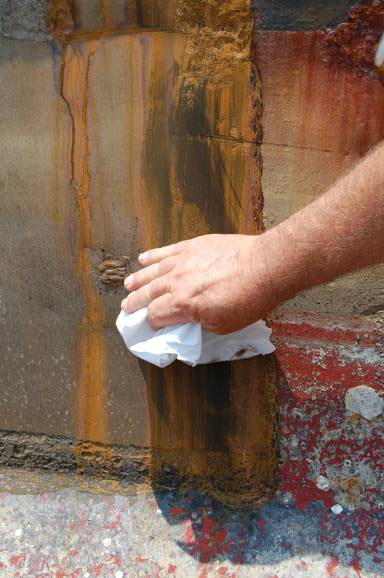January 2003, a ban on the application of tributyltin TBT -based antifouling paints; and 1 January 2008 as the last date for having TBT-based antifouling paint on a vessel. duct an independent international calibration of environment by mankind’ Goldberg, keynote adavailable alternative non-TBT marine coatings. and 3 the cost benefits from the use of these […]
Archive | Waste Treatment-Metals RSS feed for this section
Just Wastewater
April 7, 2009
The objective of this project was to investigate methods for treating the ballast water from naval vessels that have compensated fuel tanks. With an oil and water interface, there is some mixing of fuel and water so that free oil and emulsified oil are part of the ballast water. However, most shipyards that occasionally deal […]
Copper and Zinc Waste
April 7, 2009
This regulatory action lead to an intensive research effort to develop a treatment method for ship s wash water waste stream that could consistently remove TBT to levels below this discharge standard. Coagulation studies have concentrated on evaluating the performance of two metal-salt coagulants and their ability to remove copper and zinc with the large […]
Stormwater and Heavy Metals
April 7, 2009
Comments Off on Stormwater and Heavy Metals
Even with the most sophisticated and rigorous best management practices (BMPs), some heavy metals are invariably transported into storm water collection systems. Storm water discharges into adjacent receiving waters are facing increasing regulatory compliance requirements which include not only additional BMPs, but chemical monitoring programs. In addition to material selection, placement of the porous adsorber […]
Removing Tributyltin
April 7, 2009
Comments Off on Removing Tributyltin
The purpose of this study is to identify practical technology that can be used by shipyards to remove tributyltin (TBT) from large volumes of water to levels below 50 parts per trillion. Procedures for treating wastewater at the Livermore facility start with the addition of iron (II) chloride to remove sulfides and to promote settling. […]
Air Emissions and Waste Water Discharges
April 7, 2009
Comments Off on Air Emissions and Waste Water Discharges
The objective of this project was to perform a survey of U.S. shipyards and similar industries to determine what technologies are currently being implemented or planned to prevent or reduce air emissions and wastewater discharges from facility operations. There are numerous reports available, summarizing and comparing various “clean technologies”, which have potential application in the […]












April 7, 2009
6 Comments